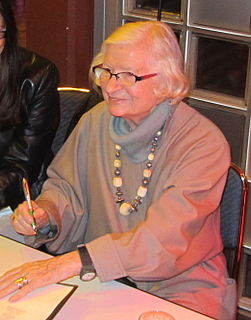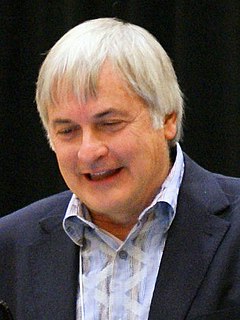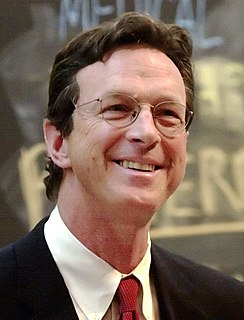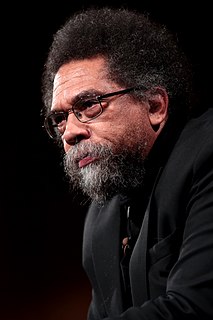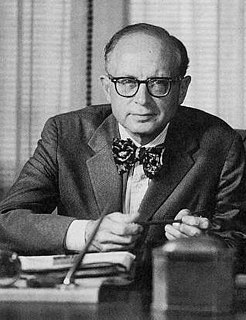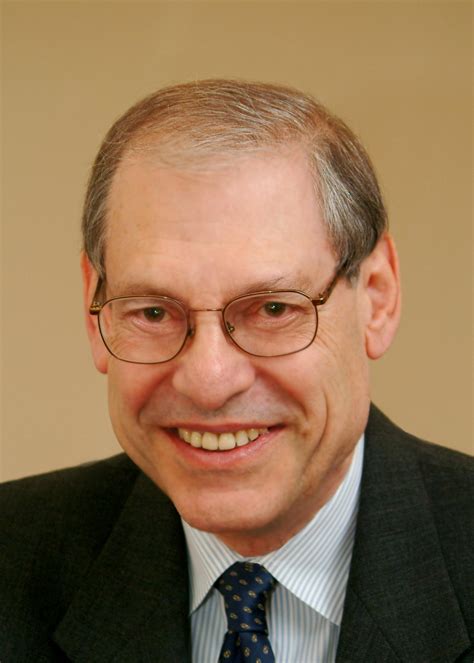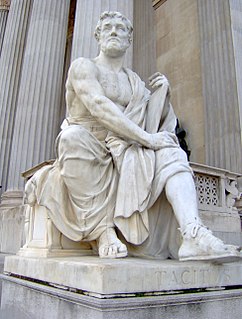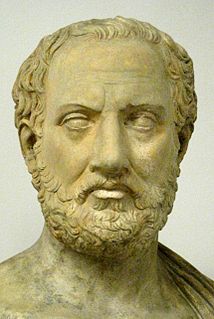A Quote by Leonard Sweet
A billion homo sapiens are added every 11 years to the planet. The hypertrophy of a single species pushes other life-forms out of bed and into extinction. The decline of biological diversity is real and severe. The alarming loss of soil fertility, forest cover, and coral reef viability and the release of fossilized CO2 that nature put away 300 million years ago in its march toward greater diversity - all these "losses" and many others are the result of one life-form annihilating other life-forms in its immoral confusion of "dominion" with "domination."
Quote Topics
Added
Alarming
Away
Bed
Billion
Biological
CO2
Confusion
Coral
Cover
Decline
Diversity
Domination
Dominion
Every
Extinction
Fertility
Forest
Form
Forms
Greater
Homo Sapiens
Immoral
Life
Loss
Losses
Many
March
Million
Million Years
Nature
Other
Others
Out
Planet
Pushes
Put
Real
Release
Result
Sapiens
Severe
Single
Soil
Species
Toward
Years
Years Ago
Related Quotes
We need to radically and intelligently reduce human populations to fewer than one billion. We need to eliminate nationalism and tribalism and become Earthlings. And as Earthlings, we need to recognize that all the other species that live on this planet are also fellow citizens and also Earthlings. This is a planet of incredible diversity of life-forms; it is not a planet of one species as many of us believe.
Of the four billion life forms which have existed on this planet, three billion, nine hundred and sixty million are now extinct. We don't know why. Some by wanton extinction, some through natural catastrophe, some destroyed by meteorites and asteroids. In the light of these mass extinctions it really does seem unreasonable to suppose that Homo sapiens should be exempt. Our species will have been one of the shortest-lived of all, a mere blink, you may say, in the eye of time.
It must be stressed that there is nothing insulting about looking at people as animals. We are animals, after all. Homo sapiens is a species of primate, a biological phenomenon dominated by biological rules, like any other species. Human nature is no more than one particular kind of animal nature. Agreed, the human species is an extraordinary animal; but all other species are also extraordinary animals, each in their own way, and the scientific man-watcher can bring many fresh insights to the study of human affairs if he can retain this basic attitude of evolutionary humility.
I think it's fantastically narcissistic to believe that in the entire universe, with all of the planetary systems that we've already discovered and the countless others that are out there, that we are the only forms of life. Now, the real question is not are there other forms of life out there, but are there other intelligent forms of life out there right now. Because the universe is not only really big but it's also really long. It's been around for a long time; it's going to be around for a long time.
The two most important forms of diversity when it comes to innovation are visible diversity (typically skin color, age, gender, etc.) and underrepresentation (anytime someone is less than 15% of the majority group). Other forms of diversity are also relevant but these are the ones that psychologically play the most role in how someone engages with the innovative process.
The humanity and the humility, which are very different than the biological species homo sapiens. Humanity versus homo sapiens - very different things. We are biological creatures, we are animals, no doubt, but when you talk about "humando," you're talking about that particular kind of animals who are aware of their impending extinction, who have the capacity to be sensitive to catastrophe and disaster and calamity and profound crisis.
We have come to look at our planet as a resource for our species, which is funny when you think that the planet has been around for about five billion years, and Homo sapiens for perhaps one hundred thousand. We have acquired an arrogance about ourselves that I find frightening. We have come to feel that we are so far apart from the rest of nature that we have but to command.


